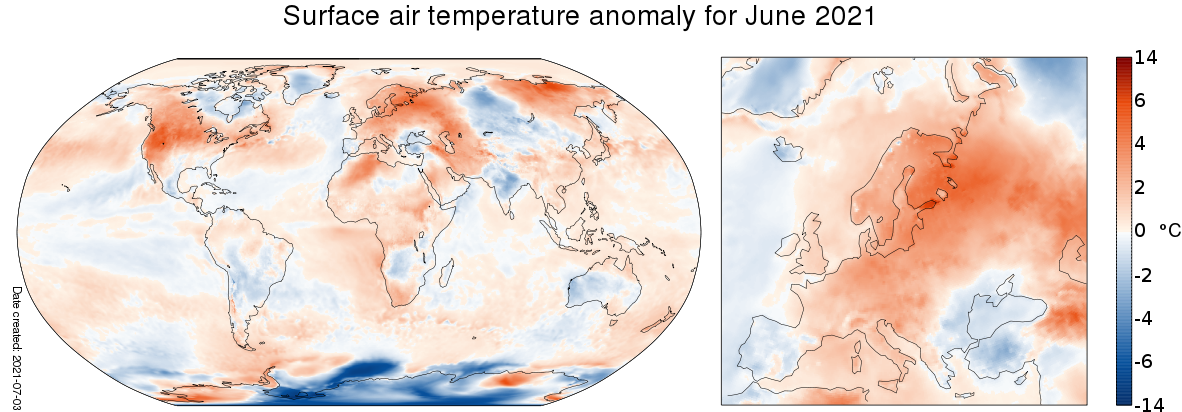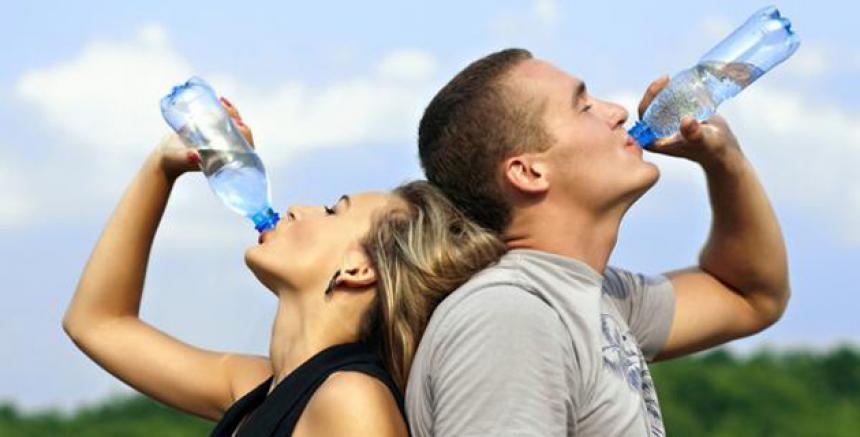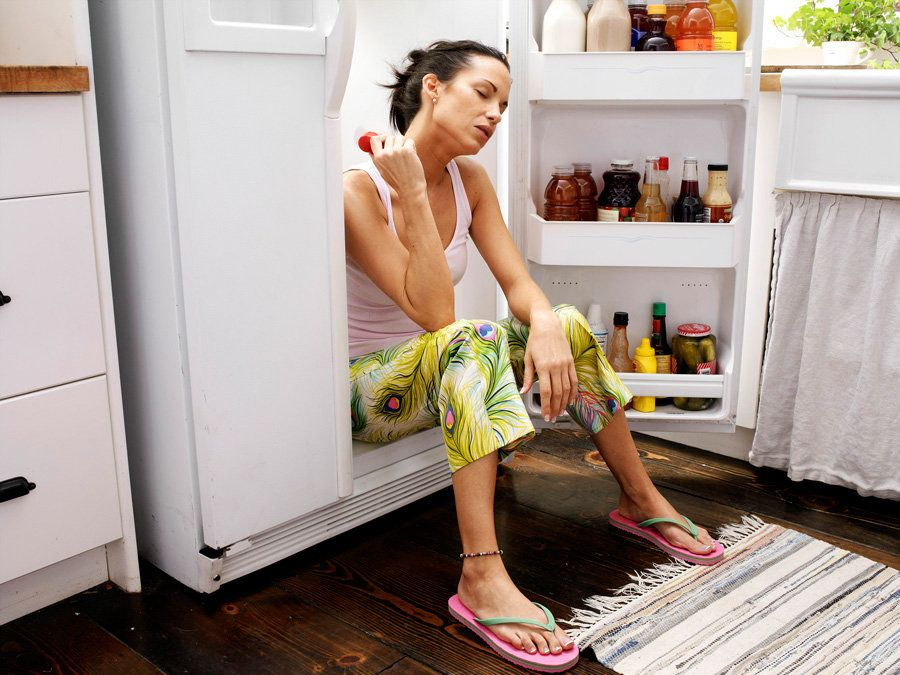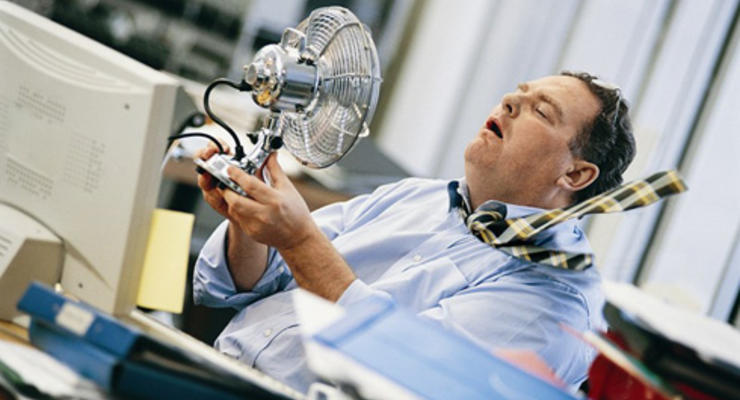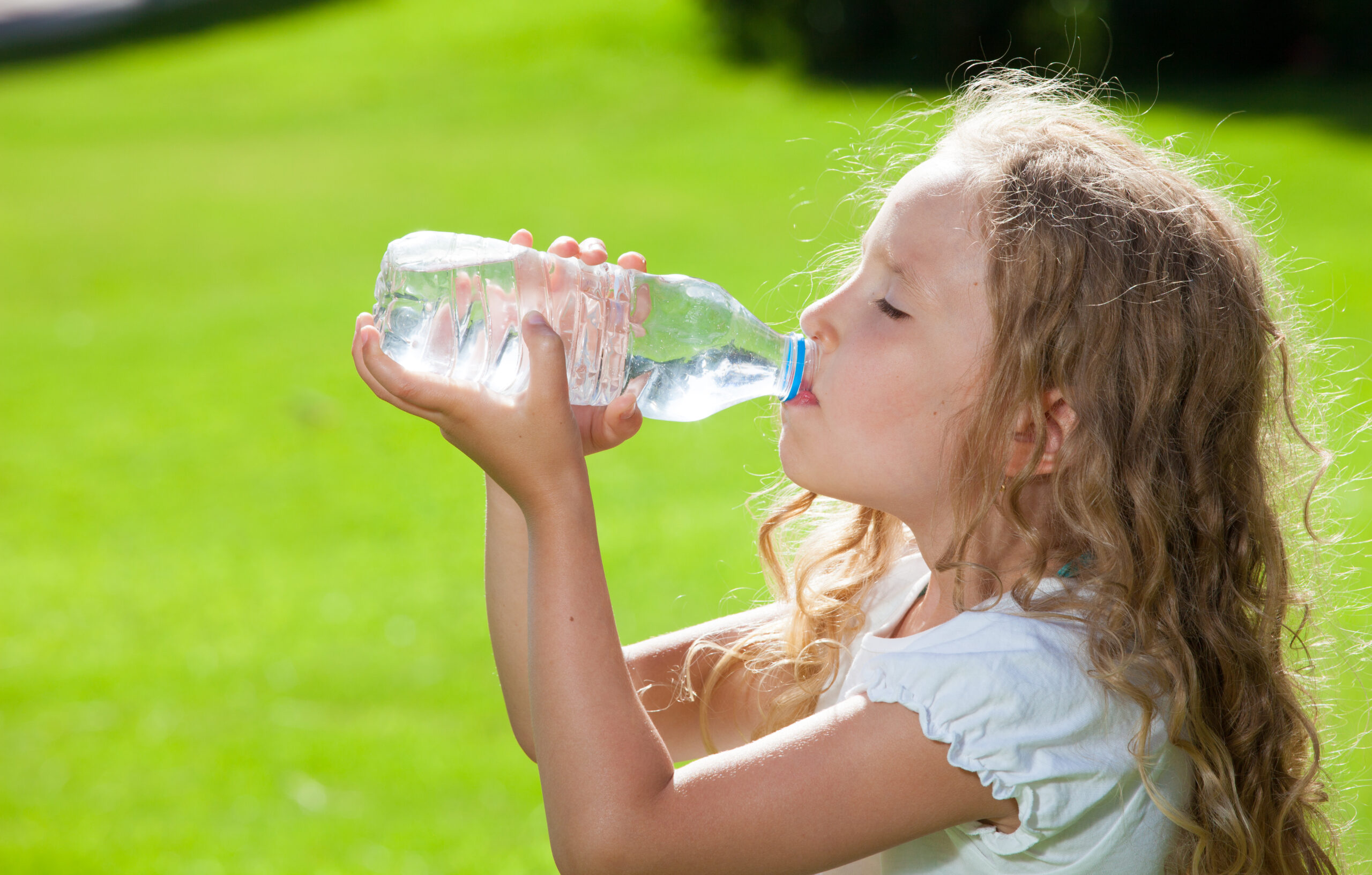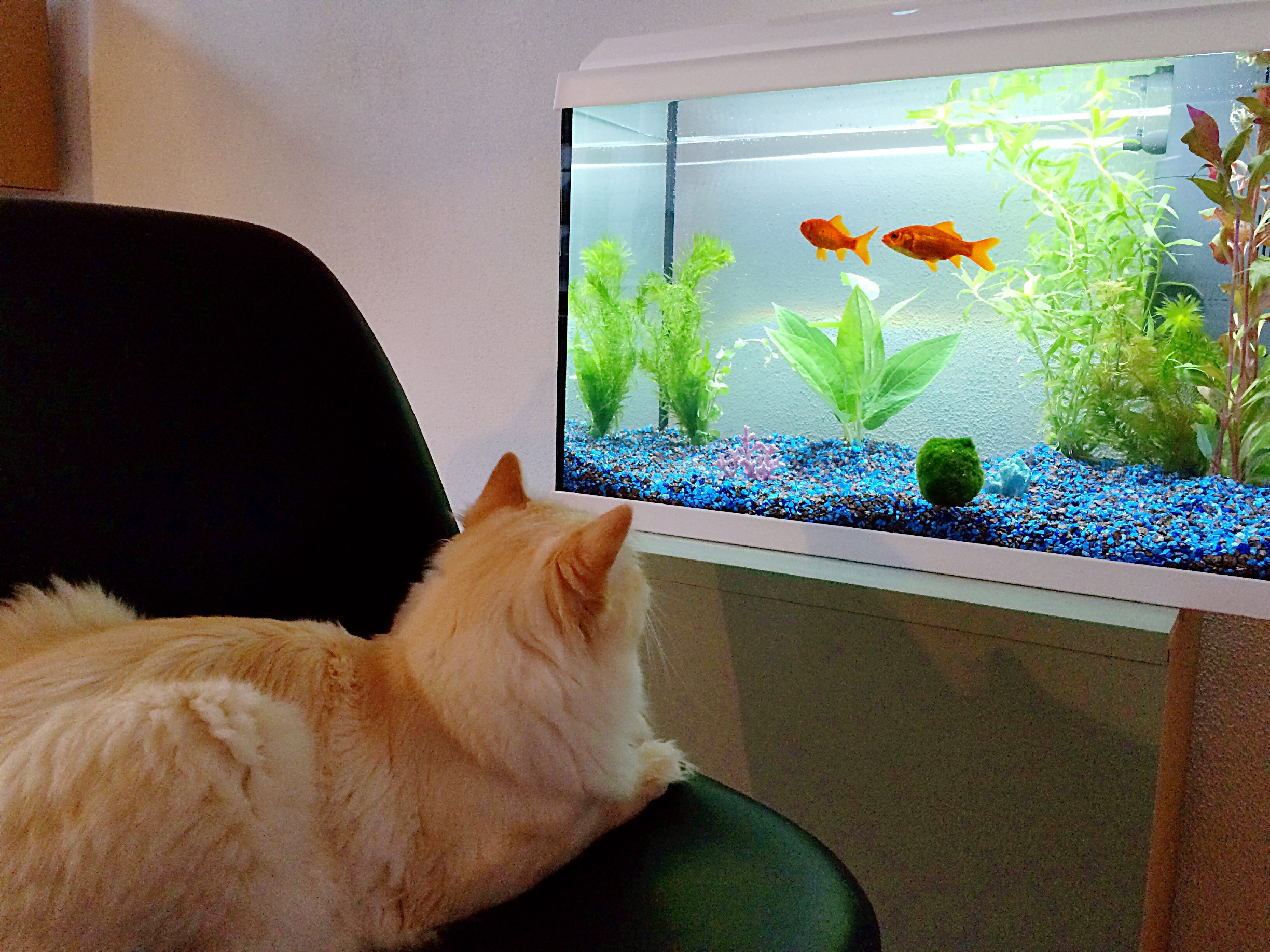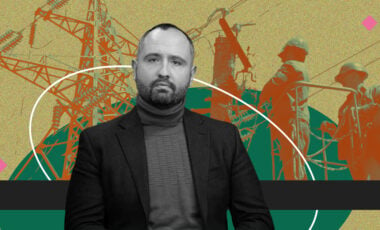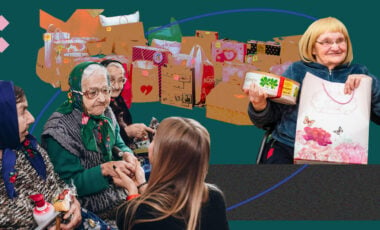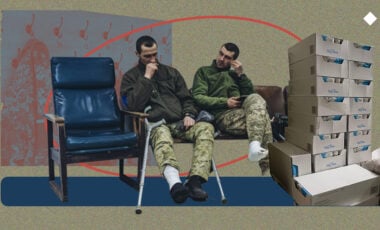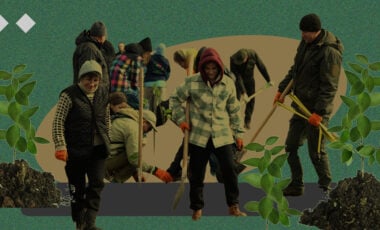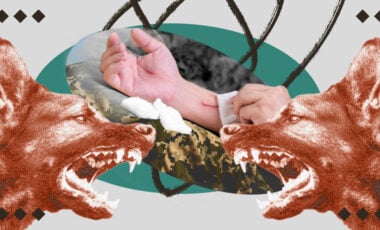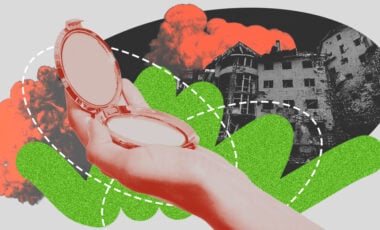Heat in Ukraine: how to escape it outside, at home, and work
You'll have to save yourself, your children, and your pets. Even aquarium fish need your help.
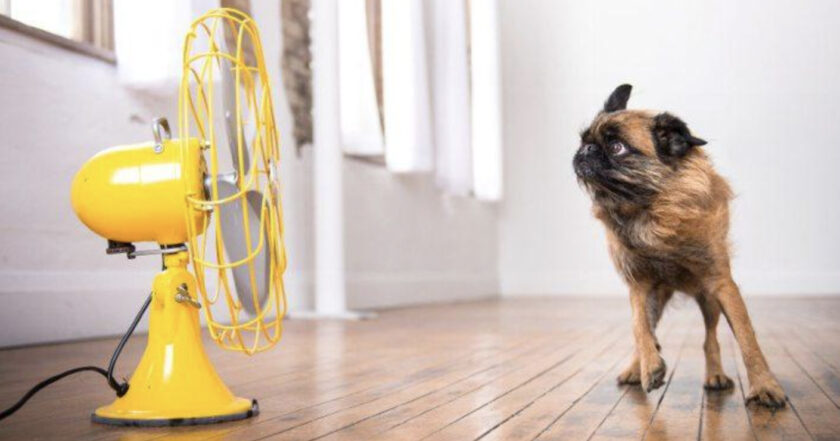
The world suffers from heat. According to the European program Copernicus, which monitors long-term climate change, last June was the hottest for North America in the history of climate observation. In Canada alone, extreme weather has killed at least several hundred people. Forest fires broke out in Turkey, which reached the resort towns of Antalya and Side; a few days ago, the temperature there reached above 40 degrees Celsius. The heat even reached the homeland of Santa Claus: Lapland recorded + 33.6 °C, a century-old record. Just a step to go, there will be nowhere to run away from our cities with hot walls and pavements.
After a slight drop in temperature, the unbearable heat returned to Ukraine. Experts believe that temperature records will continue to rise because of global warming. Will it always be so now? And is it possible to somehow adapt to such weather?
Who is heat the most dangerous for?
The heat primarily affects people with cardiovascular disease: hypertensives, people with coronary heart disease, as well as chronic diseases (eg, diabetes). In addition, it affects healthy people who do manual labor, work outdoors or in a boiling room where there are no air conditioners, or do street work.
Research from the University of Glasgow in Caledonia in Scotland shows that extreme heat also affects people's mental health. According to British statistics, even a small increase in average summer temperature occurs simultaneously with an increase in suicides. Higher temperatures increase the level of the stress hormone cortisol in our blood; there's evidence that our bodies produce more adrenaline and testosterone during sudden spikes in temperature. These changes can increase sexual appetite, but can also increase the likelihood of aggressive behavior. The heat literally knocks us off our feet, exhausts us, and makes us go crazy.
In city conditions, the heat is always tolerated worse. Under direct sunlight, pavements and house walls can heat up to 65-70°. 7-8 thousand calories of thermal energy are radiated from each square meter of surface in the heat. This creates the effect of a sauna. But we visit the steam room for a few minutes, and a person can stay for hours in such a heated atmosphere. For any adult body, it's serious stress. Children don't tolerate heat well: the smaller the child is, the harder it is to cope because they haven't yet developed adaptation.
The same type of appeals to medical institutions sharply increased in all Ukrainian regions, where the thermometer readings exceeded 35 degrees. Elderly people, heart sufferers, and people suffering from high blood pressure were among the first victims. The second place is taken by those who reached for the ponds not having the strength to grow exhausted from the heat. Of course, it's easier to spend high temperatures near the sea, river, lake, or even a fountain, but the sad list of heat victims can be added there too: wanting to immediately dive anywhere increases the risk of death and injury, and the basic lack of a hat, especially with a pint of beer or stronger alcohol can lead to overheating or heat stroke. In June alone, more than 200 people died in Ukrainian waters.
The expert advice Rubryka has collected will help you to survive the hellish summer, save your loved ones and stay unharmed.
Heat outside
☀️ In summer, the body should be provided with basic fluid. You need to consume about 1 liter of clean drinking water per one hour in the sun. Other types of liquids (compotes, kvass, homemade lemonades) will be suitable for hot weather. The latter, besides containing water, also has a variety of electrolyte compositions.
☀️ It's also important not to abuse sweet carbonated drinks because they don't quench thirst. Another bad idea is to fight the heat with alcohol, even with beer. Whatever pleasant associations you have with a cool bottle covered with condensate droplets, you need to realize that alcohol molecules have a dehydrating effect. It seems that the feeling of thirst disappears, but in fact, the water content in the body is decreasing.
☀️ The easiest way to control the amount of fluid in the body is to monitor the color of urine. Yes, if the color is light, white, then you consume enough fluids, and if it's dark, then the body lacks fluid. In addition, visiting the toilet every 1.5-2 hours indicates that you're consuming a normal amount of fluid. The temperature of the drink should be comfortable for consumption in summer and winter, from 16 to 22 degrees. This temperature won't cause sore throat or any hypothermia.
☀️ In hot weather it's important to choose the right clothes. Doctors advise wearing hats, preferably with margins, to cover the face and ears, and clothing should be with a collar and sleeves (if a person is in the sun). At the same time preference should be given to natural or special light fabrics which protect and don't interfere with heat exchange.
☀️ An indispensable accessory of this hot summer is a silk scarf. Moistening a silk scarf with water and wrapping it around your neck is enough to bring immediate coolness and comfort. And a dry handkerchief will help you when you go to the supermarket or the store with air conditioners. Besides, the scarf is weightless, doesn't take up much space, can be worn instead of a bracelet, or used to decorate the handle of a handbag; designers have already come up with many options with unisex colors or only for men.
☀️ Don't use any hair styling products. A person can lose up to 80% of heat through the head, so the scalp should be free of foreign substances. Varnishes and gels, mixed with sweat, create a crust, and excess heat can't leave the skin to the outside.
☀️ In addition, you should careful when seeking relief from the heat in air-conditioned rooms. The allowable temperature difference between that on the street and that indoors is about 10 degrees. It's also important to pay attention to the direction of airflow and not to stand close to the air conditioner under a stream of cold air.
☀️ What to do at the first signs of overheating (headache, nausea, dizziness, weakness, heavy sweating, fever):
- Go to a cool room
- Give to the victim a drink in small sips of cool (not cold!) water, mineral water, herbal tea.
- Cloth compresses soaked in water will help to cool down outside.
- Call 103 if vomiting occurs, symptoms last longer than 1 hour, or worsen.
Heat at home
The first way to escape the heat in the apartment is to close the windows to ultraviolet light. Use blinds or light curtains made of natural fabrics. Synthetics and dark fabrics heat up quickly and do not save from prolonged sun exposure. Unfortunately, it won't be possible to completely solve the problem with the help of curtains. Through the heated glass, the heat will still break inside. Foil, car screen protector, or mirror film you can buy in a hardware store will help to improve the situation. They'll ruin the look of the windows but will protect the room from the sun.
Home appliances produce an enormous amount of heat, which increases the overall temperature in the room. Try to use electrical appliances only as a last resort. The hottest devices in the apartment are stove, microwave, desktop computer, and incandescent lamps. In the heat, it's better to use a multi-cooker and LED or fluorescent lamps, which emit 4 times less energy.
In high heat, many people take a cold shower to cheer up and cool the body. However, this habit can seriously damage your health. Coldwater treatments don't cool the body temperature, because the body begins to raise it in response to the cold. Moreover, a sharp drop in temperature can have a detrimental effect on health, in particular cause colds, especially for people with weakened immune systems. There are other serious consequences of taking a cold shower in the heat, such as increased pressure and dilation of blood vessels. The shower should be pleasantly warm.
It's also necessary to ventilate the room correctly:
- Try to open windows and balconies in the morning and evening when the temperature drops
- Create a draft in the apartment; good air circulation will make conditions in the room comfortable
- Install the fan near the open window and direct it with the blades to the outside; hot air will be blown out and the room will cool faster
- If you have air conditioning, you also need to ventilate. Be sure to do this at bedtime to refresh stagnant air.
The air conditioner itself needs to be clean, with filters, and in good condition. It needs to be washed or disinfected from time to time. It's important to maintain the required level of humidity in the room. Do this with air conditioning or on your own, hanging wet sheets, or placing water containers indoors.
Often because of the heat, we have trouble sleeping. In a stuffy room, one falls asleep worse, and sleep itself becomes restless. Bed linen and sleepwear should be made of natural materials. Cotton, linen, and silk hold the coolness and cool the skin longer, synthetics are impermeable to air and create a greenhouse effect on the skin. Lifehack: put the bedding in the fridge before going to bed; it will be even more comfortable to fall asleep.
Heat at work
High air temperature affects the cognitive processes and psychological state of a person. It happens because of a person's physiological characteristics and the functioning of the brain because the brain needs constant oxygen enrichment. Due to the heat, there's hypoxia, loss of moisture, dehydration. All this leads to the brain not being saturated with oxygen. Its blood circulation is disturbed, and as a result, memory suffers, irritability increases, concentration decreases. It is clear that under such conditions, labor productivity decreases significantly, and the probability of accidents increases. To reduce the impact of high temperatures on their employees, employers need to organize the optimal working conditions and recreation, as well as take certain safety measures to prevent overheating of workers on hot days.
🥵 Under Art. 13 of the Law of Ukraine "On labor protection" the employer is obliged to create comfortable working conditions in the workplace under regulations, as well as to ensure compliance with the legislation on the rights of workers in the field of labor protection. In addition, with the onset of hot weather, it's necessary to check and complete medical kits in the workplace.
🥵 Optimal and acceptable microclimate conditions are different for different categories of work in terms of complexity, but the upper limit of temperature in permanent workplaces (i.e. where the employee spends more than half of his working time or at least two consecutive hours), is +28°C. Means and measures to normalize microclimatic conditions can be different: installing blinds or reflective films on glazed surfaces, maximum use of natural ventilation, installation of air conditioning systems, the use of special clothing and protective equipment.
🥵 When working in open areas and outside temperatures above 35ºC, a continuous working period should be 15-20 minutes, followed by resting at least 10-12 minutes in cooling rooms. The allowable total duration of thermal load per work shift for persons who use special clothing for protection against thermal radiation should not exceed 4-5 hours, and 1.5-2 hours, for persons without special clothing. Intra-shift mode of working and recreation is organized due to working hours: the duration of regulated breaks should be at least 10% of working time for every 2°C exceedance.
🥵 In cooling rooms, the air temperature should be maintained at 24-25°C to avoid the negative impact on the body of a large temperature difference (because sudden temperature changes significantly increase the risk of heart attacks).
🥵 Working at an outdoor temperature of more than 37ºC in terms of microclimate is dangerous (extreme). Outdoor work isn't recommended at this temperature. It's necessary to change the order of the working day and to transfer working hours to morning or evening time. In high temperatures, it's not recommended for persons younger than 25 and older than 40 years to work.
Heat and children
👶🏻 It's best to go for a walk with children before 11 am and after 6 pm and always be in the shade. A hat on your head is a must!
👶🏻 Don't leave the house without water. Always take clean drinking water and let your child often take a few sips. Don't replace water with compotes and juices. Babies up to 6 months can't be made to drink, but of course, give drinks if the baby doesn't mind. Yes, if it's boiling outside and your baby is less than six months old, it should still drink water, even while breastfeeding. You don't need to pour water into the child. You should suggest; if the baby is thirsty, it won't refuse water.
👶🏻 In a closed stroller, the temperature can rise to 38°C. Put the baby in an open stroller; it's better ventilated and more interesting for the child. Get rid of socks and a hat! Fewer clothes shouldn't be made of natural, light fabric. You can walk just in a diaper. The baby can develop heatstroke if the mother wraps the baby too much, the baby is dressed in tight or synthetic clothing, and doesn't receive water in hot weather.
👶🏻 Don't forget about sunscreen. Use the ones recommended for your baby's age and renew sun protection every 2 hours.
👶🏻 Don't leave children alone in cars even for a second. A study conducted by General Motors showed that the air temperature reached 50 degrees and above in a car parked in the sun at an air temperature of 35 degrees in 20 minutes. In 40 minutes, it can go up to 65.5 degrees. A slightly opened window did not save the situation. The barely open window won't help. The child's body stops working when the temperature in the car reaches 40 degrees, and the body temperature in children rises three to five times faster than in adults.
👶🏻 The younger the child, the more attention parents should pay to its condition in the heat. And "hot weather" for a child under three years is 28°C and above.
👶🏻 The first signs of heatstroke in a child: sudden moodiness, overexcitation, skin redness, cold sweat, abdominal pain. Adults for whom a temperature of 28 degrees isn't a great "overload" may attribute these symptoms to the child's fatigue or suspect the onset of an infectious disease. If the measures aren't taken, the baby becomes weak, falls asleep, has a headache, dizziness, darkening of the vision, or flickering of the eyes. The baby's skin dries quickly, becomes hot and dry. With no help, all the symptoms of dehydration develop further: breathing becomes intermittent, heartbeat is disturbed, vomiting, nosebleeds, convulsions, loss of consciousness may occur.
👶🏻 At the first symptoms of heatstroke, the child should be put in a cool room as soon as possible; remove excess clothing, and give them drink. The child should be given to drink often, but little by little, so as not to cause vomiting. Towels soaked in cold water should be applied to the forehead and nape. If the child is less than three years old, it is better to call an ambulance immediately. If severe symptoms occur, an ambulance should be called for older children as well.
👶🏻 In the heat, there's a high risk of catching "summer" intestinal infections. Children are the most vulnerable, but also adults, this infection may not go away. At elevated temperatures, bacteria multiply rapidly, the nutrient medium for them can be fruits, dairy products, and more. You can get an enterovirus infection when swimming in water if you swallow the water or it gets into the nose. After all, water in reservoirs is rarely of good quality. And enterovirus in the summer is "on the rise" and is well stored in open water. This kind of infection manifests itself in the form of headache, fever, intestinal problems. If you suspect viral infection, consult a doctor. Self-medication is dangerous to health!
Heat and our younger brothers
🐕 Remember that not only people but also animals suffer from the heat. When it's hot outside and it's not raining, don't forget that animals and birds also want to drink, but they don't have that opportunity. Don't be lazy to bring them water. So that the yard-keepers don't throw away your drinking bowls, leave a note that this water is for animals.
🐕 Home cats and dogs also don't tolerate heat. Therefore, the owners must follow several rules: first, the apartment should have a few bowls of water; for each animal about two or three, the water should be regularly renewed. Why so many bowls? Because most animals, especially cats, are very lazy, and also save energy in the heat. And if they have only one bowl, no matter how much they want to drink, they may not reach it, so fresh water should be in every room. By the way, the same applies to rodents: Guinea pigs, rats, chinchillas, which can die from overheating. There should also be several drinkers in their cages.
🐕 If you don't have air conditioning, you should make sure that the animals aren't exposed to direct sunlight, the room is ventilated, and the floor remains cool; it's almost the only way to cool down for your pets. Don't be lazy and cool the floor and wipe it with cold water several times a day.
🐕 If you take your pet on a car trip, never leave the animal in a locked car. Even when you only need to be away for a few minutes and the windshield is covered with a damper. All this won't save your pet from possible heat stroke and even a horrible death.
🐕 On hot days, go for a walk early in the morning (6-7 am) and in the evening after 6 pm. If the animal needs a day's walk, don't spend more than 15 minutes on a walk. You'll have to abandon moving games during this period.
🐕 It's especially difficult for the smooth-haired breeds of dogs and cats to tolerate heat. Breeds with a shortened muzzle are also at risk; they suffer from shortness of breath due to the special structure of the pharynx. These are Persians and exotics among cats, as well as bulldogs and pugs among dogs. Don't pour water on a dog or cat, as the pet risks getting pneumonia. It is best to moisten the abdomen, forehead, nose, paws, and the outer surface of the ears with cool water. You can also moisten a cotton cloth with water and tie it on the animal's head.
🐕 You shouldn't cut your pet fur short. Trimming to zero will only harm the animal, as the undercoat acts as a temperature regulator.
🐕 How do you know if your pet has heat or sunstroke? It won't be able to tell you about its feelings. Pay attention to the symptoms. First of all, it's lethargy, shortness of breath, rapid breathing, pale mucous membranes; for example, dogs and cats have pale tongues and conjunctiva. And the mouth becomes dry. If such symptoms are present, it's necessary to moisten towels with cold water and cover the animal with them, be sure to give a drink. If it doesn't help, the animal is still lying down and breathing hard, take it and rush to the vet, because dogs and cats die from severe heatstroke with a high probability! After all, their metabolic processes change. It's not so scary for young animals, not more than three or four years old, especially if you help them in time. But it can be critical for older dogs and cats, which already have a variety of pathologies of the cardiovascular or respiratory system.
🐠 In hot weather, aquarium fish also need help. The water in the aquarium is heated, and as a result of this predictable process, the oxygen level decreases. Most tropical aquarium fish in the wildlife at a temperature of about 24-26°C. In summer, the air temperature is so volatile that it can heat aquarium water to 30°C.
- It's better to remove the lid from the aquarium because it contributes to the intense heating of water. Getting rid of it, you literally won't let the fish suffocate. Lack of oxygen can cause the death of all the aquarium inhabitants.
- Throwing ice cubes in the aquarium is not the best idea. Pieces of melting ice are gradually becoming smaller and fish can regard them as food, which is absolutely unacceptable. To solve the problem quickly and efficiently, freeze water in small plastic bottles, and then lower them into the aquarium.
- Hydrogen peroxide (3%) is also used to saturate the water with oxygen. However, in order not to harm the inhabitants of the aquarium or plants, it should be added in clear proportions: no more than 2.5 ml per 10 liters once a day. In water, peroxide decomposes into oxygen and water. It's also an excellent antifungal and antibacterial agent; using it to prevent such troubles is a good thing.


